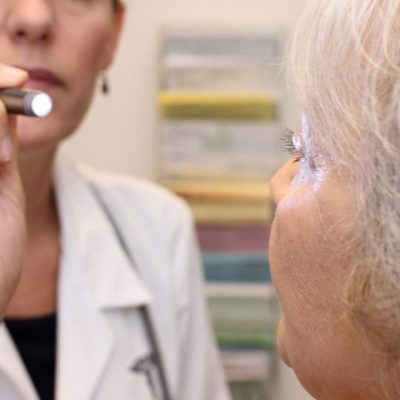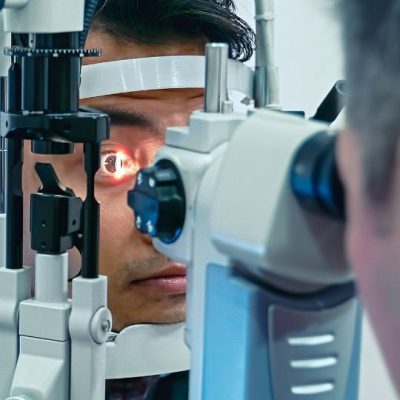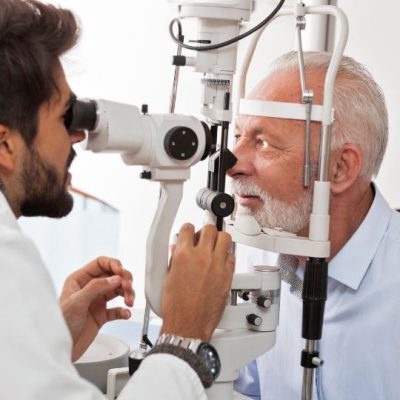Ophthalmology, refers to a wide range of surgical procedures performed on the eye or its surrounding structures. These surgeries aim to correct vision problems, treat eye diseases, or restore visual function. Here is an overview of eye surgery:
- Refractive surgeries: These procedures correct refractive errors such as nearsightedness (myopia), farsightedness (hyperopia), astigmatism, or presbyopia. Examples include LASIK (laser-assisted in situ keratomileusis), PRK (photorefractive keratectomy), and implantable lenses.
- Cataract surgery: Cataract surgery involves removing a cloudy lens from the eye and replacing it with an artificial intraocular lens (IOL). This procedure restores clear vision and is one of the most common eye surgeries performed worldwide.
- Corneal surgeries: Various corneal surgeries are performed to treat conditions such as corneal dystrophy, keratoconus, corneal ulcers, or corneal scarring. These surgeries may involve corneal transplantation, corneal reshaping techniques, or the use of amniotic membrane grafts.
- Glaucoma surgeries: Glaucoma surgeries aim to reduce intraocular pressure to prevent damage to the optic nerve. Procedures include trabeculectomy, in which a small drainage hole is created in the eye, or implantation of drainage devices.
- Retinal surgeries: These surgeries address conditions affecting the retina, such as retinal detachment, macular holes, or diabetic retinopathy. Procedures include vitrectomy, in which the gel-like substance inside the eye is removed and replaced, or retinal laser treatment.
- Oculoplastic surgeries: Oculoplastic surgeries involve reconstructive or cosmetic procedures on the eyelids, tear ducts, or surrounding structures. Examples include eyelid surgery (blepharoplasty), ptosis repair, or tear duct surgery (dacryocystorhinostomy).
- Strabismus surgery: Strabismus surgery corrects misalignment of the eyes (crossed eyes or lazy eye). The procedure adjusts the eye muscles to improve alignment and binocular vision.
Each eye surgery is tailored to the specific condition and patient’s needs. The techniques used can vary, including the use of lasers, microsurgical instruments, or implants. Highly trained ophthalmic surgeons perform these procedures to ensure optimal visual outcomes and the overall health of the eyes.
How is eye surgery done?
The specific techniques used in eye surgery can vary depending on the type of procedure being performed. However, here is a general overview of how eye surgery is typically done:
- Preoperative preparation: Before the surgery, the patient undergoes a thorough eye examination to assess their visual health and determine the most appropriate surgical approach. The patient’s medical history, medications, and allergies are also reviewed. Anesthesia options, such as local or general anesthesia, are discussed with the patient.
- Anesthesia administration: Depending on the procedure and patient’s preference, either local anesthesia (numbing drops or injections around the eye) or general anesthesia (medication to induce sleep) may be administered to ensure the patient’s comfort during the surgery.
- Surgical approach: The surgeon accesses the eye through a small incision or through the use of specialized instruments. Some eye surgeries, such as cataract surgery or refractive surgeries like LASIK, involve using lasers for precise and minimally invasive treatment.
- Surgical intervention: The surgeon performs the necessary steps to address the specific condition. This may involve removing or reshaping tissues, inserting implants or lenses, repairing structures, or removing obstructions. Surgical techniques can vary greatly depending on the specific procedure and patient’s needs.
- Wound closure: At the end of the surgery, the surgeon carefully closes any incisions using sutures, adhesive materials, or self-sealing techniques. The goal is to promote proper healing and minimize scarring.
- Postoperative care: After the surgery, the patient is moved to a recovery area, where they are monitored by medical staff. Eye drops or ointments may be prescribed to aid in healing and prevent infection. The patient is given instructions regarding postoperative care, including medication usage, activity restrictions, and follow-up appointments.
It is important to note that the details of each eye surgery can vary significantly based on the specific procedure and individual patient’s needs. Ophthalmic surgeons have specialized training and expertise in performing eye surgeries and work closely with their patients to ensure the best possible outcomes.
What should be considered after eye surgery?
After undergoing eye surgery, it is crucial to follow postoperative instructions provided by your ophthalmologist for a smooth recovery and optimal outcomes. Here are some important considerations:
- Medication and eye care: Use prescribed eye drops, ointments, or medications as directed. These help prevent infection, reduce inflammation, and promote healing. Follow the recommended dosage and frequency, and be careful not to touch the eye with unclean hands. If any concerns or side effects arise, contact your ophthalmologist.
- Protect the eye: Shield your eye from irritants, bright lights, and potential injury during the healing process. Wear sunglasses or protective eyewear as advised by your ophthalmologist, especially when going outdoors or in bright environments.
- Rest and recovery: Allow yourself sufficient rest and limit activities that strain the eyes, such as reading, watching screens, or engaging in strenuous exercises. Follow the recommended duration of rest and restrictions on specific activities.
- Avoid rubbing or touching the eye: Refrain from rubbing or touching the operated eye to prevent damage to the surgical site and potential complications. If there is itching or discomfort, consult your ophthalmologist for appropriate remedies.
- Hygiene and cleanliness: Maintain proper hygiene by washing your hands thoroughly before administering eye drops or touching the eye area. Avoid swimming or exposing the eye to water sources that may carry bacteria or irritants during the initial healing period.
- Attend follow-up appointments: Regularly attend scheduled follow-up visits with your ophthalmologist. These appointments allow your doctor to monitor your healing progress, assess the surgical outcome, and address any concerns or questions you may have.
- Report any changes or complications: If you experience sudden or severe pain, loss of vision, excessive redness, increased discharge, or any unexpected symptoms, contact your ophthalmologist immediately. Timely communication is crucial to identify and address any potential complications.
Remember that the specific postoperative instructions may vary depending on the type of eye surgery performed. It is essential to closely follow your ophthalmologist’s guidance for a successful recovery and the best possible visual outcomes.






















